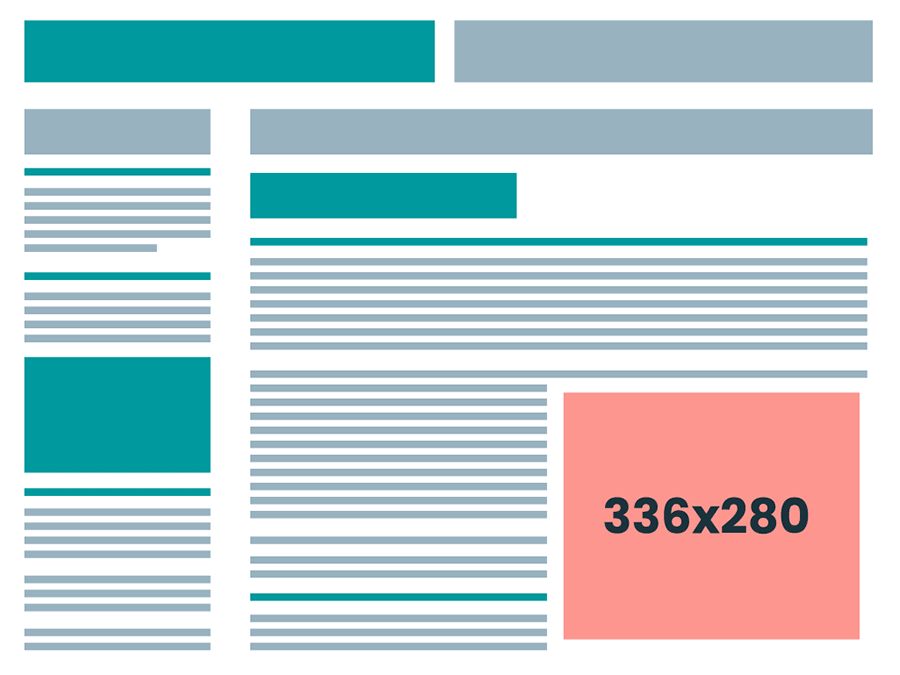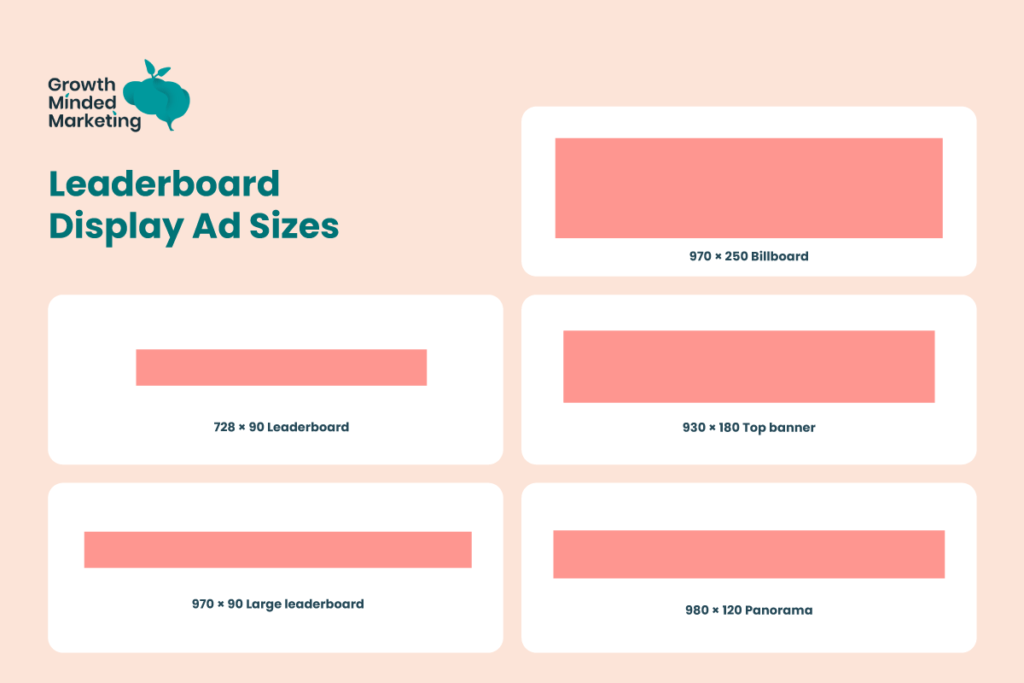Running Display ads isn’t always a walk in the park, particularly when it comes to determining which Google display ads sizes to run on your Display campaign.
Google Display ads reach over 90% of internet users worldwide across over 2 million websites and apps in the Google Display Network. That’s a massive amount of opportunity right there!
But how do you choose the right Display assets for your business or campaigns?
Understanding the most top performing and most common Google Display ad sizes is a solid starting point to running a successful Google Display campaign.
First let’s get the basics out of the way!
Table of Contents
ToggleWhy Google Display Ad Sizes Really Matter
As PPC marketers, we’re hardwired to focus on KPI metrics when creating ads – the creative aspect of the design, messaging, and CTAs etc.
But does size matter in display ads? Yes.
The banner ad size is a key factor that determines what users see on the internet, where they see it, and how they engage with it.
Ultimately, it determines the likelihood of your ad being seen. The size (or ratio) of your banner ad maximises or limits the potential reach of it – which determines the impressions, clicks and conversions your ad will receive.
Publisher websites (where your ad shows) determine the availability and size of ad solt spaces.
They control where ads show on their websites and apps and know the popular ad spaces and the ones that engage most (and make them the most money).
Once you know this, you can avoid wasting time and money creating ads for less common ad spaces, or ones with low click-through rates (as we’ll see later).
Note: Regardless of the ad type, remember that Google only supports image files in 3 formats: JPG, PNG, and GIF. For the file size, no display banner should be more than 150KB, regardless of its dimension.
You can (and should) upload HTML banner ads. These are typically lossless and can expand to any size and not lose any resolution or pixelate like the image formats above do.
Knowing which ad sizes serve the best results, you can focus on getting the maximum reach and viewable impressions with them.

Google Ads tips
Learn advanced tips that PPC professionals use to dramatically increase their Google Ads performance!
The Top Performing Display Ad Sizes on Google
There’s no better place to start when looking for the top-performing Google banner ad sizes than Google’s top-performing ad size list.
According to their research, Google outlines the 5 best-performing on the Google display network across different devices.
Medium rectangle: 300×250
The medium rectangle, although very similar to the large rectangle below (336×280), allows adequate space to fit more content in your banner design.
This popular ad format is considered one of the most effective (and perhaps the most expensive) to run.
Large rectangle: 336×280
This ad size gives advertisers more ad inventory making it ideal for display ads. It performs well in text content or at the end of articles.
Leaderboard: 728×90
Often the Leaderboard is the first banner ad to load at the top of the page above content. And in that position ‘above the fold’, it’ll increase the likelihood that it’ll be seen and clicked.
Half page: 300×600
The large skyscraper is known as a half-page ad for a reason. It takes up a huge amount of space on the page, which makes it very prominent. Google claims the Half page banner is one of the fastest growing ad sizes in impressions and ad spaces.
Large mobile: 320×100
This banner is an alternative to the standard mobile banner – 320×50. It is a top preference for mobile as it gives more height than the standard size.
What Are The Most Common Google Display Banner Ad Sizes?
Let’s look at the best of the rest.
With Google’s diverse available banner sizes, don’t be tempted to pick whatever seems most convenient.
If you have the time and resource, creating your banner ads in the most common sizes will give your ads the most chance of being seen. This means more impressions as publishers will likely have more inventory for these ad solts.
Square and Rectangle Display Ad Sizes
These ad sizes need no further explanation; they appear in square and rectangle ad spaces.
- Small square: 200 × 200
- Square: 250 × 250
- Triple widescreen: 50 × 360
- Vertical rectangle: 240 × 400
- Medium rectangle: 300 × 250
- Netboard: 580 × 400
- Large rectangle: 336 × 280
Skyscraper Display Ad Sizes
These ads get their names from their tall and thin appearance (like a skyscraper). Their shape can make squeezing in enough brand-friendly design elements to the banners more difficult.
- Wide skyscraper: 160 × 600
- Skyscraper: 120 × 600
- Portrait: 300 × 1050
- Half-page: 300 × 600
Leaderboard Display Ad Sizes
Also known as horizontal banners, these ads are wide and highly visible and often take prominent positions on publisher sites.
- Leaderboard: 728 × 90
- Large leaderboard: 970 × 90
- Billboard: 970 × 250
- Top banner: 930 × 180
- Panorama: 980 × 120
Most Popular Google Display Mobile Ad Sizes
These are the most common display dimensions for mobile.
- Large Mobile Banner: 320 x 100
- Mobile Banner: 320 x 50
- Mobile Banner: 300 x 50
What about Responsive Display Ads??
Responsive Display Ads adapt to the available ad space on the publisher’s website or app.
They automatically adjust to fit the available space. The non-adapting limitation in static banner ads led to Google developing the responsive display ad – which is now the default display ad type on Display Network.
With their auto-adapting capabilities, Google’s responsive display ads perform better than static image ads in terms of impressions, because Google will cram them in whichever available ad slots on a publishers site.
Note: If you have strict brand design guidelines, Responsive search ads can be a bit of a disaster as they’ll likely serve text-only versions, which frankly look a bit 💩.

Google Ads tips
Learn advanced tips that PPC professionals use to dramatically increase their Google Ads performance!
So Which Display Ad Size is Right for You?
As you can see, the Google Display Network supports numerous ad sizes.
Although we’ve outlined the top-performing and most common Google Display ads sizes above, there’s one hard truth you need to know…
No one ad dimension guarantees success.
Although it’s advisable to spend time creating assets arounds the most common and top-performing ad sizes, your Display campaign success depends on many other factors.
What’s critical is the correct user messaging and offer, depending on your audiences segmentation and position in the marketing funnel.
…Then focus on the creatives used – images, animation, colours, fonts etc.
Some ad formats may perform better for a particular brand or even a publisher, and poorly on others. PPC Marketers need to bring all these variables together to achieve success.
Once your ads are live and seeing impressions and clicks, it’s time to start analysing which performs best.
Look to A/B test elements in your banners that affect the clickabiliy and engagement of your ads, and double down on the ad sizes that give you the best results.
But don’t stop there.
Look at the finer details. Do some ad formats perform better on some publishers or target placements? What creatives or copy has a better CTR? Invest more budget and time there.
Wrapping Up On The Most Popular Google Display Ad Sizes
Although Display ads have lower CTRs than their search counterparts, they’re critical (and relatively affordable) when it comes to enhancing brand awareness.
(You’ll likely see some of our own Display remarketing after reading this article 😂)
While Google outlines the top-performing Display ads sizes, that shouldn’t stop you from testing different ads to see which works best for your display campaign.
Now to you: What’s your take on Google display ad sizes? Do you have any that outshines the rest?

Google Ads tips
Learn advanced tips that PPC professionals use to dramatically increase their Google Ads performance!












